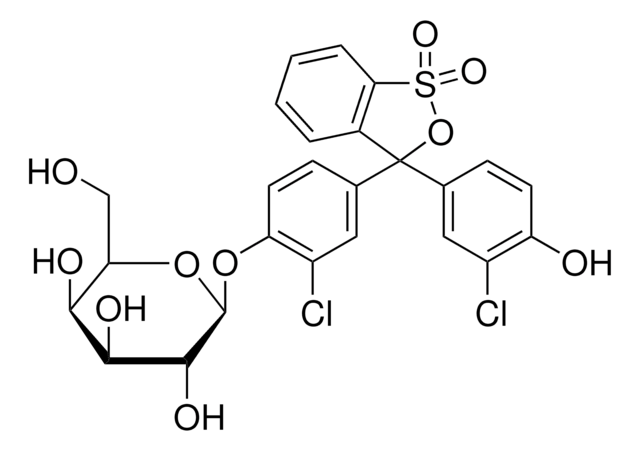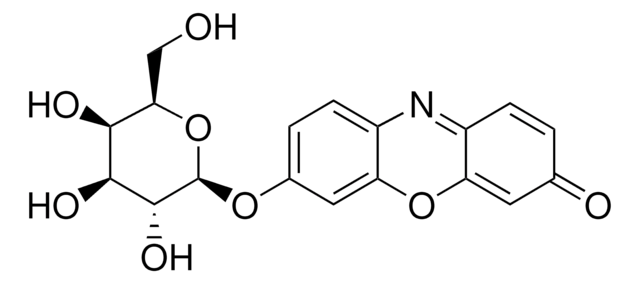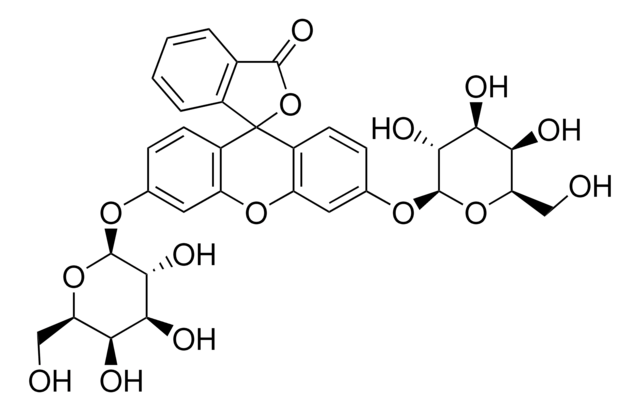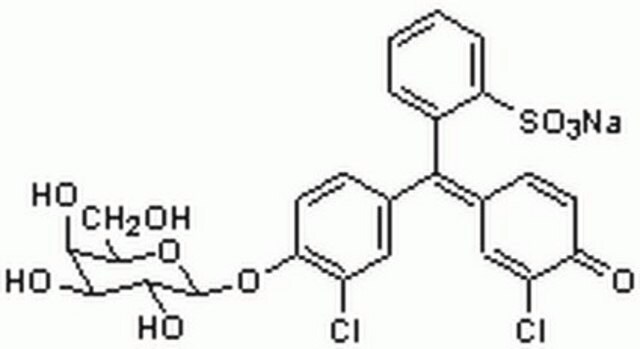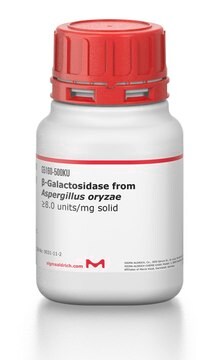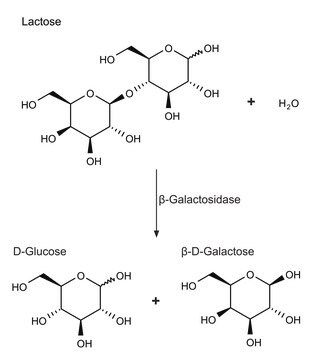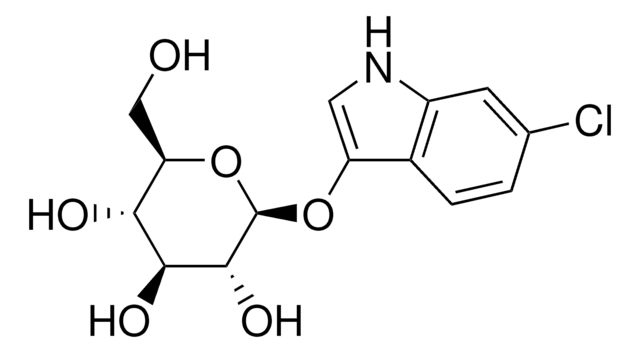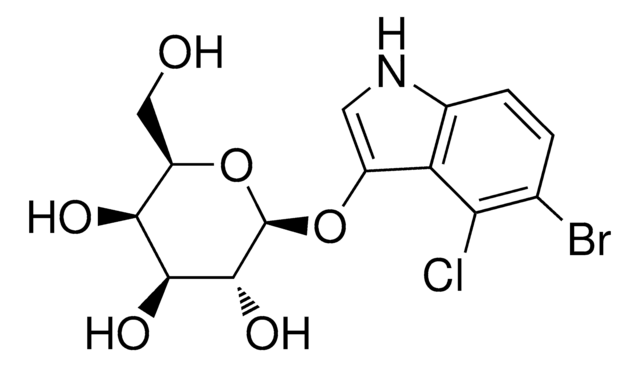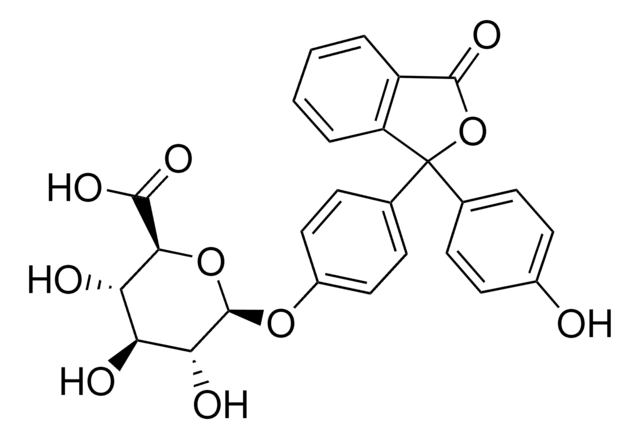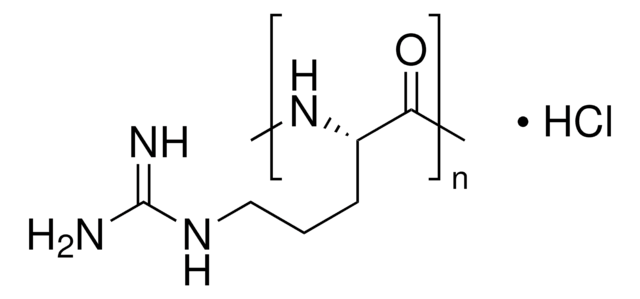59767
Chlorophenol Red-β-D-galactopyranoside
β-galactosidase, ≥90% (HPLC), powder or crystals
Sinónimos:
CPRG, Chlorophenol Red-β-D-galactoside
About This Item
Productos recomendados
Nombre del producto
Chlorophenol Red-β-D-galactopyranoside, ≥90% (HPLC)
assay
≥90% (HPLC)
form
powder or crystals
solubility
water: 20 mg/mL, clear, orange to very deep red
storage temp.
−20°C
SMILES string
OC[C@H]1O[C@@H](Oc2ccc(cc2Cl)C(=C3/C=CC(=O)C(Cl)=C3)\c4ccccc4S(O)(=O)=O)[C@H](O)[C@@H](O)[C@H]1O
InChI
1S/C25H22Cl2O10S/c26-15-9-12(5-7-17(15)29)21(14-3-1-2-4-20(14)38(33,34)35)13-6-8-18(16(27)10-13)36-25-24(32)23(31)22(30)19(11-28)37-25/h1-10,19,22-25,28,30-32H,11H2,(H,33,34,35)/b21-12-/t19-,22+,23+,24-,25-/m1/s1
InChI key
YOUWVNCQJOMMEU-AETRGLENSA-N
¿Está buscando productos similares? Visita Guía de comparación de productos
General description
Application
- in paper-based cell-free protein expression system for target RNA detection
- in colorimetric detection of multiple clinically relevant mutations using a lacZ output gene
- in colorimetric assay for bacteria quantification
Other Notes
Storage Class
11 - Combustible Solids
wgk_germany
WGK 3
flash_point_f
Not applicable
flash_point_c
Not applicable
ppe
Eyeshields, Gloves, type N95 (US)
Elija entre una de las versiones más recientes:
¿Ya tiene este producto?
Encuentre la documentación para los productos que ha comprado recientemente en la Biblioteca de documentos.
Los clientes también vieron
Nuestro equipo de científicos tiene experiencia en todas las áreas de investigación: Ciencias de la vida, Ciencia de los materiales, Síntesis química, Cromatografía, Analítica y muchas otras.
Póngase en contacto con el Servicio técnico